The Pioneers of Digital
Digital – per the World English Dictionary; is defined as “the representation of data as a series of numerical values”. Kinda bland as definitions go. At least until one takes a deeper look, especially during a time when it seems that “digital” technology is what keeps our world turning. Let me explain.
While digital technology continues to change the way we create and listen to music, it was the evolution of analog synthesizers to digital that started the movement that gave electronics a fierce artistic presence in music.
I had a chance to sit down with Joe Scacciaferro for a schooling on the digital evolution. And arguably there is NOTHING like, how do you say… Hearing It From The Horses Mouth! Joe is a true veteran who has lived, performed and developed on the front lines of music technology.
“My career and electronic music kind of meshed at the same time,” Scacciaferro explains. “Realizing that in order to survive and make a living [as a musician], session music was where it was at.”
It was the late 1970’s when Scacciaferro found himself bouncing around New York City from studio to studio gaining traction as a studio musician. After a brief time Scacciaferro evolved and made the move from musician to recording engineer, allowing him to become familiar with the technology used to create and record music.
Realizing the advantage and depth it gave him as an artist and professional through understanding and applying the technology, Scacciaferro decided to dedicate his nights to school earning himself a Bachelors of Science in Electrical Engineering, or if you’re a letter junkie, a BS EE.
His studies perfectly paralleled the technology revolution of digital computing. This revolution also kicked the electronic music renaissance into high gear. Now, having been an accomplished performing musician, acquired a formal educational in EE and accompanied by professional exposure to both the past and future of technology, he was poised to become a force in the new age of digital music technology. For clarity’s sake, let me sort out now that Joe was a force in THE new age of digital music. Not to be read as “…a force in NEW AGE music” although, without the digital synth, NEW AGE music would certainly be short of one majorly contributing instrument.
“During the time I was working on my degree the world was racing forward incorporating digital technology into all aspect of our lives” He told me.
“Apple, the beginnings of Microsoft, and Silicon Valley were still in their early phases of growth. They existed, yet the average person was not aware of the impact they were about to have their everyday lives.”
While the breakthrough of computer technology was about to burst wide open on the West Coast, synthesizer technology was beginning to emerge in the East.
“At the time, synthesizer technology was a strange thing. There weren’t a lot of companies making them and only a few musicians knew how to create with them,” Scacciaferro notes.
In New Jersey, Joe Scacciaferro founded one of those companies, Triple S Electronics, which was all inspired by an earlier relationship with keyboard player and synth wizard, Steve Defuria. Steve and Joe worked together at a small music store in New Jersey where Joe was fixing electronic musical equipment and Steve was the keyboard salesman. It was destiny the two found each other: Steve having an insatiable desire to explore the unknown power of synthesizers and Joe combining his passion for music and his new found love of cutting-edge technology.
Soon enough the new duo would team-up with the legendary Robert Moog, who had pioneered early synth technology, and Alan R Perlman of ARP Instruments. Steve and Joe found themselves in a perfectly matched codependent partnership whose focus was on exploring and expanding the limits of these instruments.
Now rapidly growing, the technology would begin to make an even bigger mark on how music was created. However, the monophonic nature of what was current day’s technology would make it difficult for early synthesizers to hold the attention of the industry at large.
“All synthesizers were monophonic up to this point, meaning you could only play one note at a time,” says Mr. Scacciaferro, “Even so, it had amazing potential!”
For the first time you could create any instrument or sound you could imagine. Unfortunately, however, only a single note at a time.
As time pressed on and technology continued to move forward, new companies began to emerge in the community of synthesizers including Oberhiem Instruments, who earned their reputation by developing innovative synthesizers and even patenting some of the technology that they had created themselves.
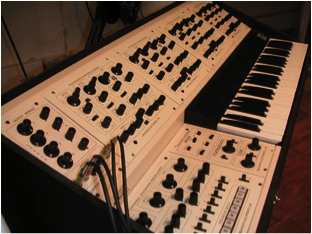 During this time synthesizers were still analog instruments, the wave of technology that came from companies like Moog and ARP started a domino effect that made the instrument almost impossible to ignore in the music world.
During this time synthesizers were still analog instruments, the wave of technology that came from companies like Moog and ARP started a domino effect that made the instrument almost impossible to ignore in the music world.
“The whole music scene changed, and synthesizers and electronic music became the forefront of just about every band at the time,” Mr. Scacciaferro said.
Being a musician who had a deep understanding of the technology, Joe became sought out as a reliable resource for other musicians wanting to explore the bits and pieces of these coming-of-age synthesizers, as well as the technology itself. This would provide many dividends in the early 90’s when the digital age shined as the dominant force in the music industry for creating, recording AND listening.
“When digital started happening, it created the opportunity to play things polyphonically. Synthesizers were then defined by how many notes you could play at one time.” Scacciaferro explained, “multi-note polyphony??? became the first question every musician asked. ”
While the original synthesizers pioneered the ability of emulating the sounds of other instruments, switching from one sound to another took hours of re-patching sound models and retuning dozens of controls. The next-generation digital synths would finally allow musicians to create all of those sounds with the additional bonus ability of saving those sounds as presets. Once saved, they could be recalled with the push of a button. “How much memory and how many presets can I save?” became the second question asked, Joe laughingly said.
As the power of computing increased and the cost of this technology actually decreased, the renaissance in creating and recording music exploded. The West Coast became home to dozens of new synthesizer companies, each pushing the other to create new and exciting products. Drum machines and Sequencers became the next wave in music and technology. With these devices a single musician now possessed the ability to write, record, modify and play back an entire orchestral score all in the comfort of his or her bedroom.
What an amazing time. It seemed with the advent of each new technology, an entire new genre of music evolved. Simultaneously, with each new music came new demands from the technology, a symbiotic relationship like no other.
Exemplified perfectly as the driving force behind the development of MIDI. “If I loved my Oberheim drum machine and I wasn’t willing to give up my Moog synthesizer, I was stuck. At the time, you could not comingle manufactures’ products. If you used an Oberhiem drum machine, you where limited to using an Oberhiem sequencer and an Oberhiem synthesizer. Within the ranks of the music community lives a unique model of loyalty… Not so much a “brand loyalty” as in other industries or products, rather a “Sound and Function” loyalty. Some people preferred the sound of a Moog but the easy recording on a Sequential Circuits sequencer. In order to interface between manufacturers each would have to reveal the operating system to the other. As in most industries, competing manufactures are reluctant to share their design secrets with their competition. As the demand for this system interface grew and sales dropped, the pressure to resolve this issue was soon addressed. Free Market efficiencies and competition vs public demand doing what they always do… leveling the field.
In 1983, Musical Instrument Digital Interface, or MIDI , was introduced as an interface spec for all manufactures to use free of charge. It was a public domain design developed for the benefit of all.
Only 8 pages long with very basic abilities: turning individual notes on and off, volume control, etc. It has since grown to be not only the core of ALL electronic instruments but has created an entirely new culture of creating, recording and producing music.
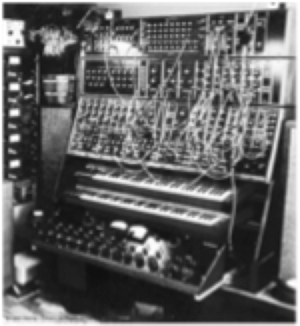
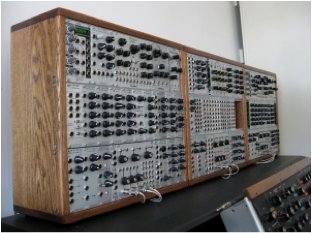
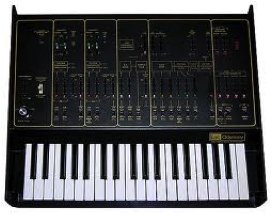
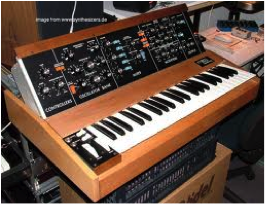
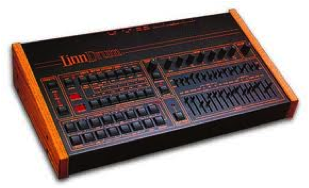
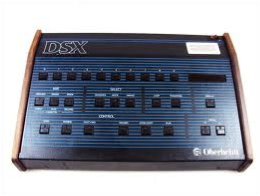
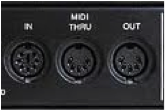




love reading your posts… you never cease to amaze me….